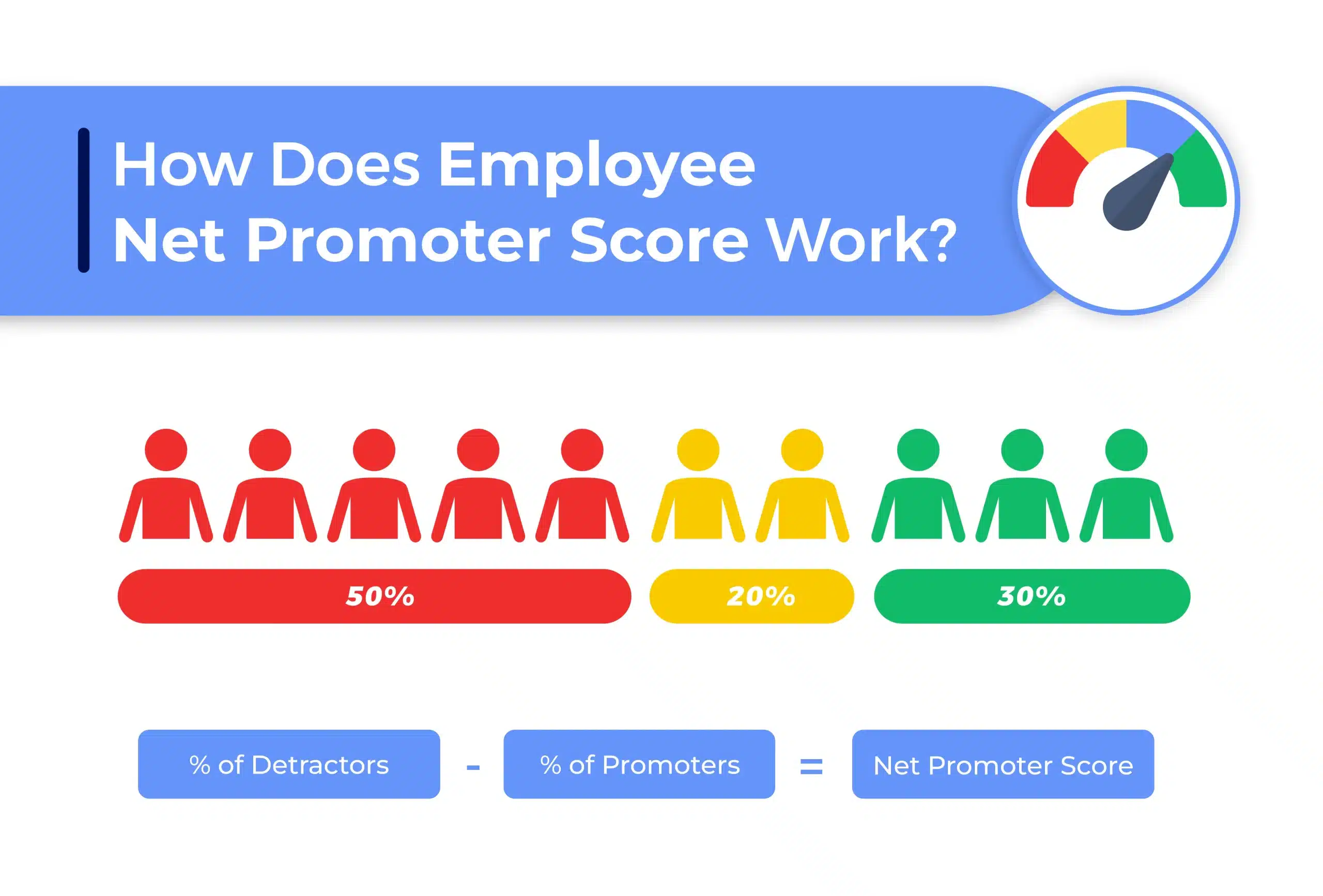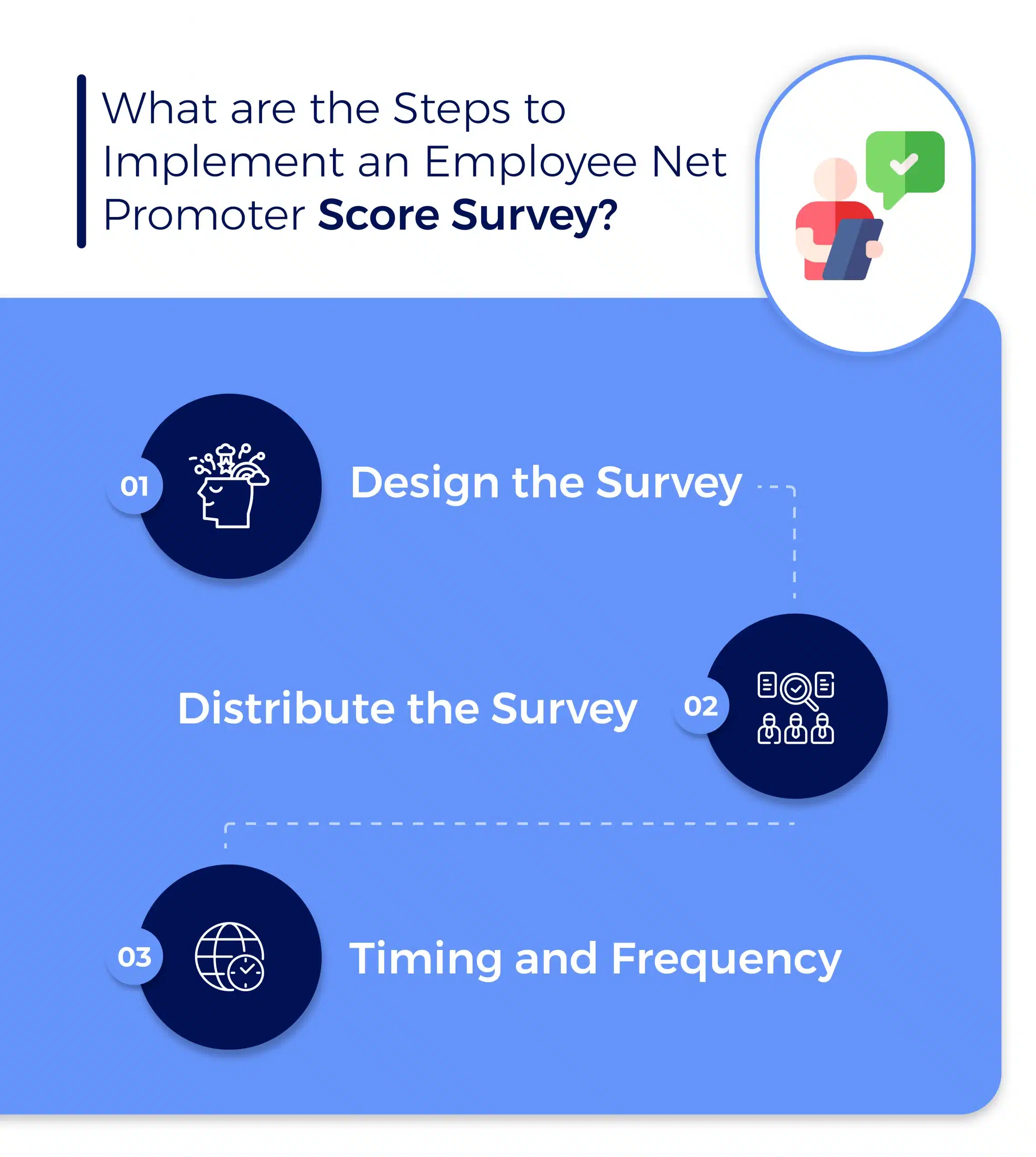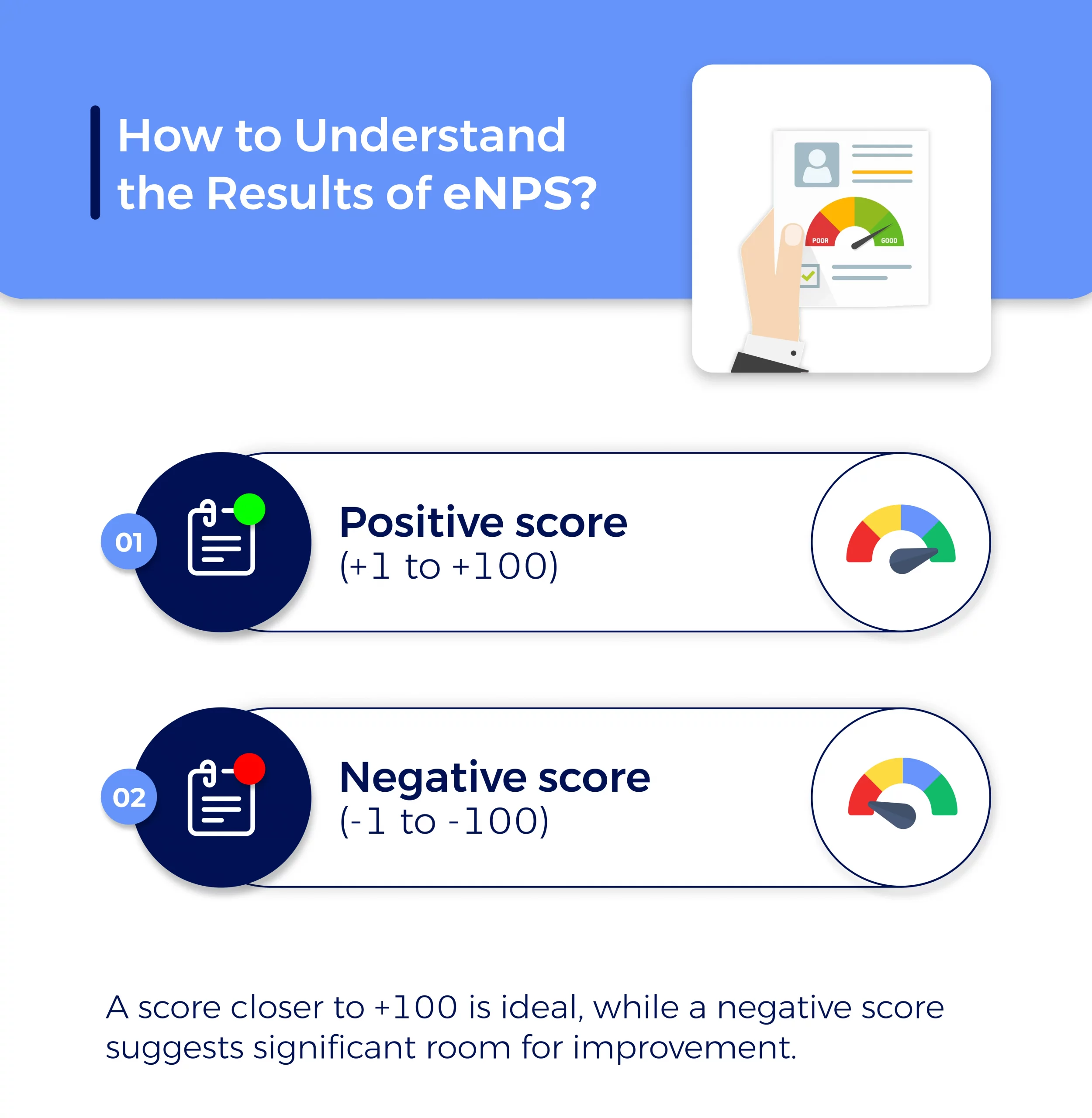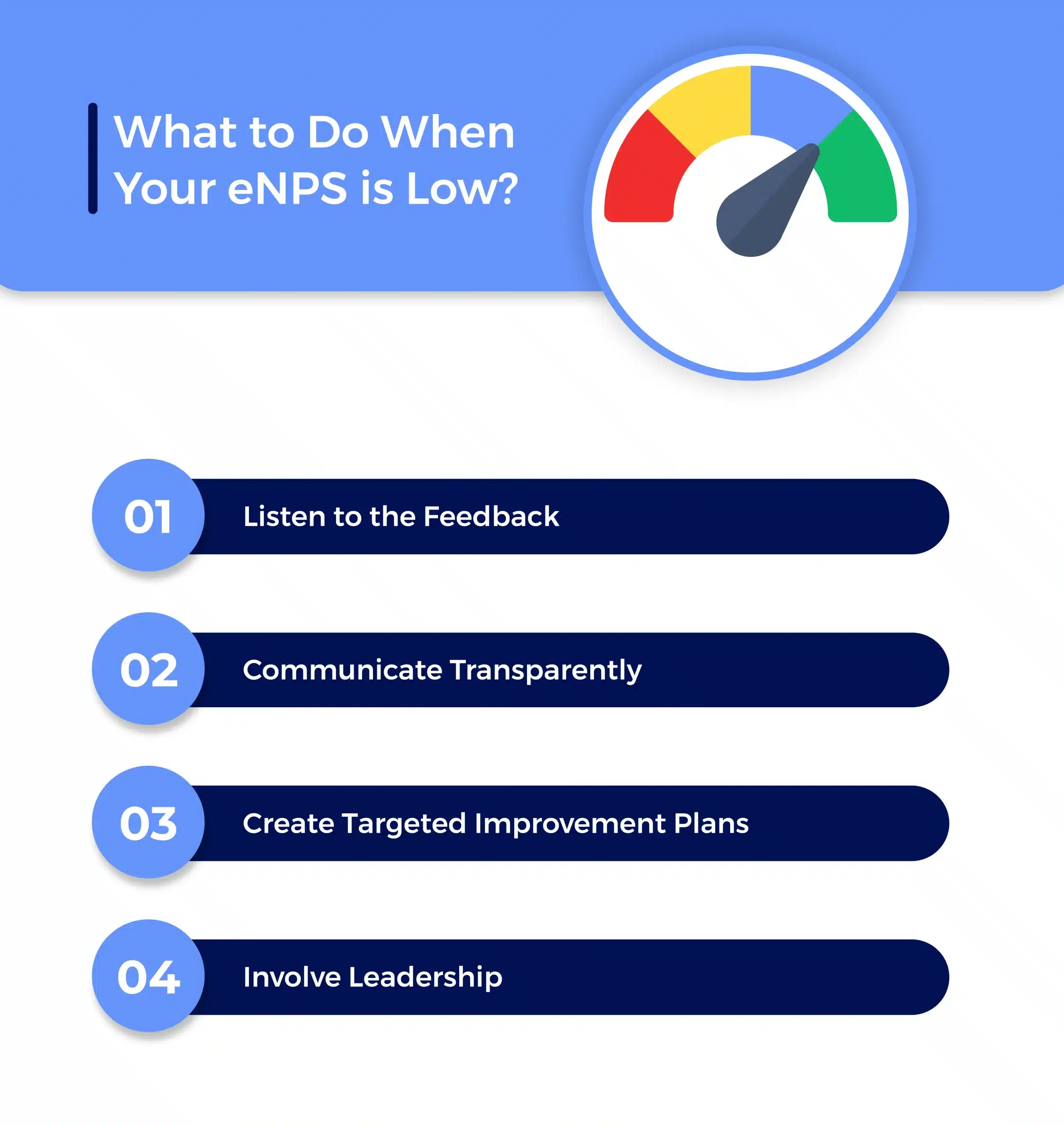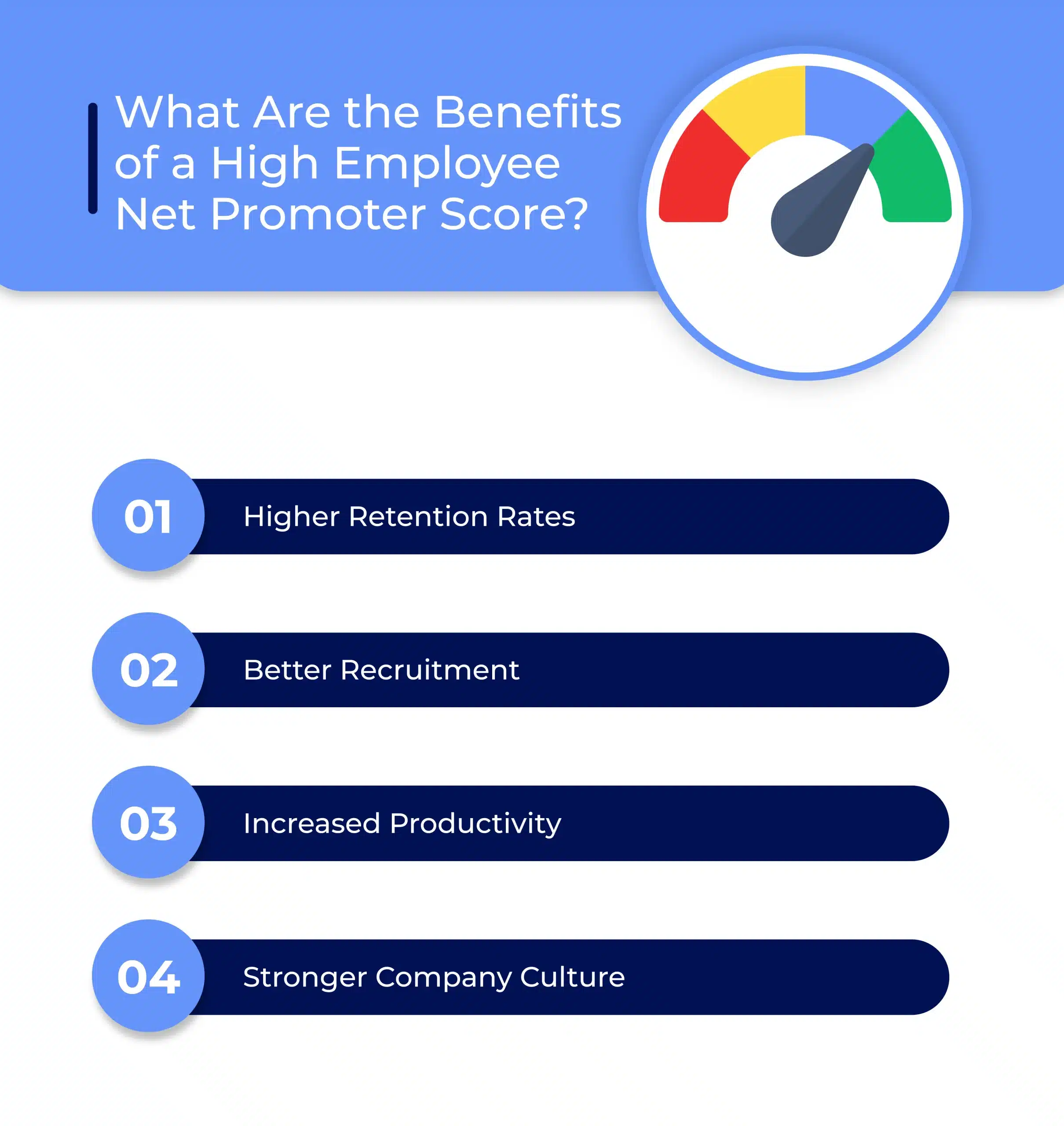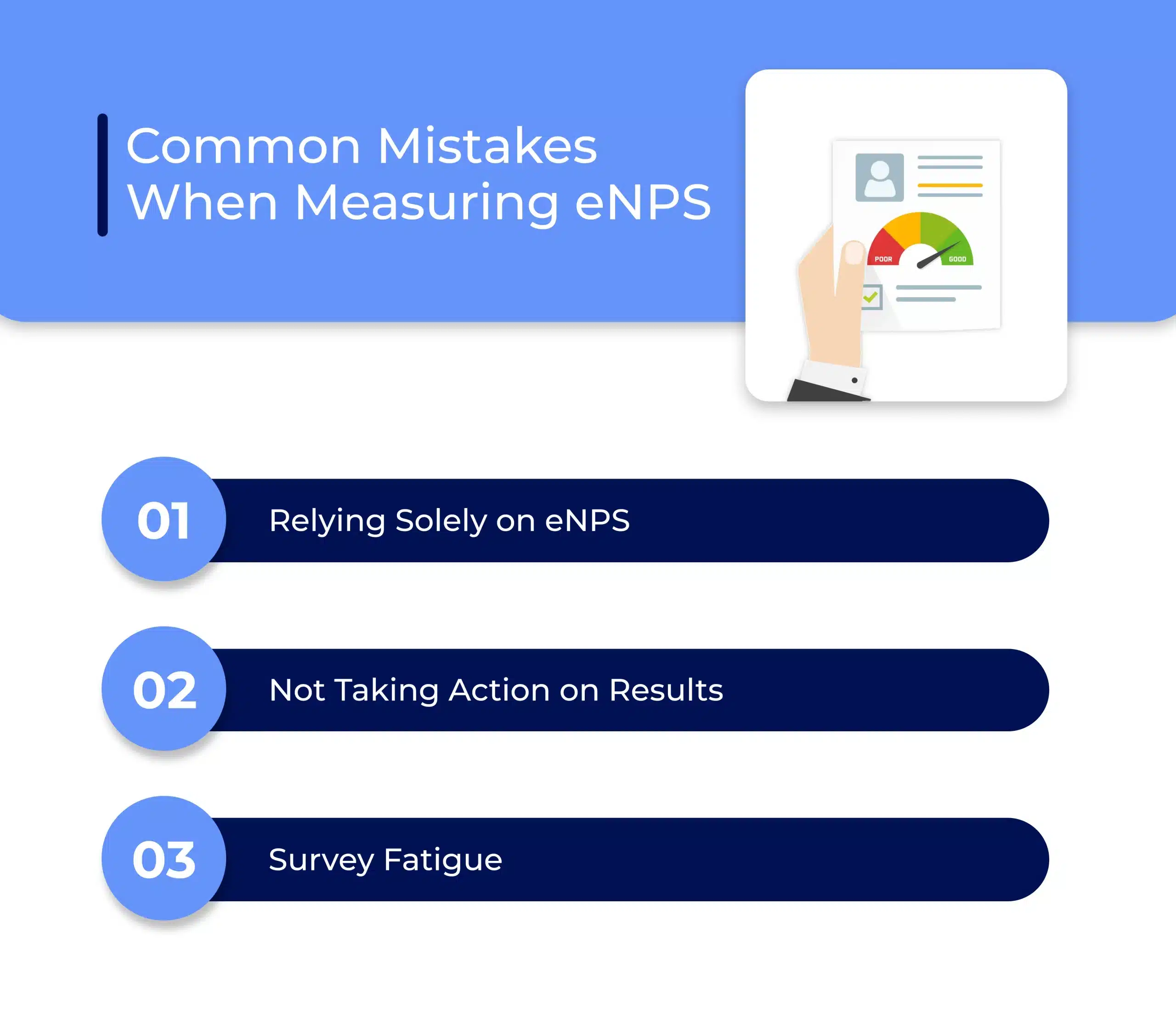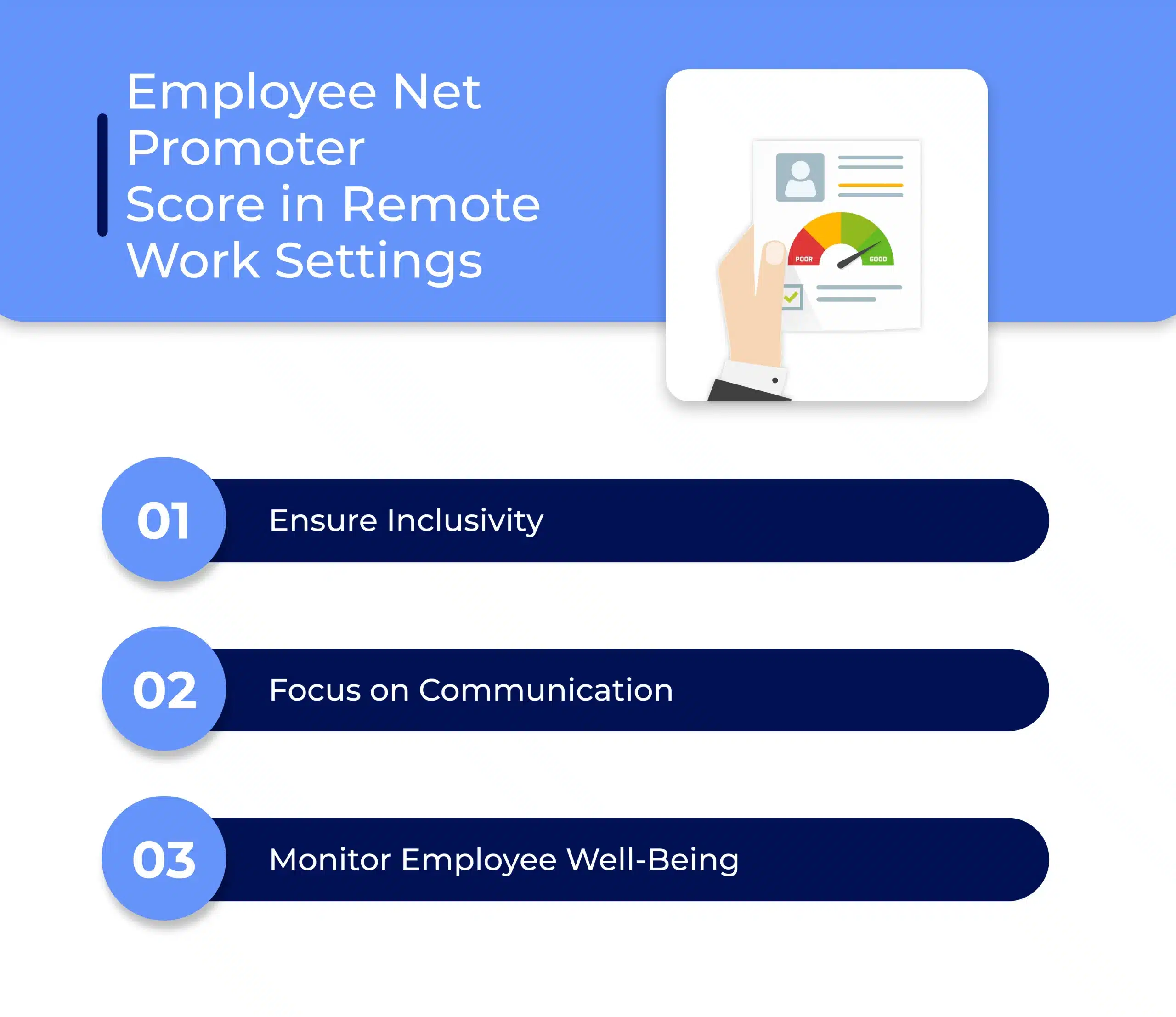Table of content
Why is eNPS important?
eNPS (Employee Net Promoter Score) is important because it measures employee loyalty and satisfaction, providing valuable insights into overall employee engagement and organizational growth potential.
It can effectively indicate engagement, productivity, and company culture. Engaged employees are often more productive and loyal, which leads to better business outcomes.
To learn more about how employee engagement drives success, check out why employee engagement is important.
How Does Employee Net Promoter Score Work?
The Employee Net Promoter Score is calculated using a simple survey question:
“On a scale of 0-10, how likely are you to recommend our company as a great workplace?”
Based on their responses, employees are categorized into three groups:
- Promoters (9-10): Highly satisfied employees who would recommend the company.
- Passives (7-8): Satisfied but not enthusiastic, likely indifferent.
- Detractors (0-6): Dissatisfied employees who may discourage others from joining.
To calculate eNPS, you subtract the percentage of detractors from the percentage of promoters. The result can range from -100 to +100.
Why is eNPS Important for Organizations?
eNPS provides valuable insights into employee morale and satisfaction. A high score indicates a healthy work environment where employees are likely to stay and perform well. A low score can be a red flag for potential issues such as high turnover, low engagement, or a toxic work culture.
Organizations with a high eNPS experience better retention rates, higher productivity, and improved employer branding. Employees who feel valued and engaged are more likely to contribute positively to the business.
Employee Net Promoter Score vs. Traditional Employee Surveys
Traditional employee surveys often include multiple questions covering job satisfaction, leadership, and communication. While these surveys offer more detailed insights, they can be time-consuming and overwhelming for employees and managers.
eNPS, on the other hand, is a straightforward, single-question survey that offers a quick snapshot of employee sentiment. Its simplicity makes it easy to implement and analyze, making it a popular choice for companies looking to measure employee loyalty efficiently.
What Are the Steps to Implement an Employee Net Promoter Score Survey?
Implementing an eNPS survey is simple, but it requires careful planning. Here’s how you can start:
- Design the Survey: Ask the standard eNPS question to keep it simple. To gain more insight, you can also include an optional follow-up question like “Why did you give that score?”
- Distribute the Survey: Ensure the survey reaches all employees, including remote workers. Use email, company communication tools, or survey platforms for distribution.
- Timing and Frequency: Conduct the survey regularly—quarterly or bi-annually—so you can track trends over time.
How to Understand the Results of eNPS?
Once you collect the responses, analyze your eNPS score. Here’s how to interpret it:
- Positive score (+1 to +100): More promoters than detractors, signalling a generally satisfied workforce.
- Negative score (-1 to -100): More detractors than promoters, indicating issues with employee satisfaction.
A score closer to +100 is ideal, while a negative score suggests significant room for improvement.
What to Do When Your eNPS is Low?
A low Employee Net Promoter Score can be alarming, but it’s also an opportunity for growth and improvement. Here’s what you can do if your eNPS score is low:
- Listen to the Feedback: Read through the comments from detractors to understand their concerns. Are there common themes, such as poor communication or lack of career growth opportunities?
- Communicate Transparently: Share the results with your employees and acknowledge the areas where the company can improve. Transparency shows that you take their feedback seriously and are committed to positive changes.
- Create Targeted Improvement Plans: Focus on specific areas identified in the feedback. If employees cite poor management or lack of recognition, create targeted initiatives to address those problems.
- Involve Leadership: Leadership plays a crucial role in turning around a low eNPS. Ensure that managers and executives are involved in creating and implementing solutions based on the feedback.
Taking immediate action after a low eNPS result shows employees that their opinions matter and builds trust, which can gradually improve the score.
How Employee Engagement Improves eNPS?
Employee engagement plays a crucial role in determining the results of your Employee Net Promoter Score. Engaged employees are likelier to be promoters—they’re invested in the company’s success and recommend it to others. Disengaged employees, on the other hand, often become detractors, lowering your eNPS score.
To boost engagement, focus on creating a work environment where employees feel valued and connected to the company’s mission. Recognize achievements, provide growth opportunities, and maintain an inclusive workplace.
What Are the Benefits of a High Employee Net Promoter Score?
A high eNPS brings several benefits to your organization:
- Higher Retention Rates: Employees who are promoters are more likely to stay with the company, reducing turnover costs.
- Better Recruitment: A strong eNPS can make your organization attractive to top talent. Employees who promote the company often share positive reviews, enhancing your employer brand.
- Increased Productivity: Engaged employees tend to be more productive, innovative, and motivated. A high eNPS signals a team that is committed to achieving organizational goals.
- Stronger Company Culture: A positive eNPS reflects a strong, cohesive company culture. Employees who feel supported and valued contribute to a healthier work environment, which can lead to sustainable growth.
Common Mistakes When Measuring eNPS
Measuring Employee Net Promoter Score can provide valuable insights, but there are common mistakes to avoid:
- Relying Solely on eNPS: eNPS is a useful tool, but it shouldn’t be the only metric used to measure employee satisfaction. Supplement it with detailed surveys or interviews to get a complete picture.
- Not Taking Action on Results: Collecting eNPS data without addressing the feedback can demoralize employees. Ensure that management takes steps to address issues raised, showing employees that their voices matter.
- Survey Fatigue: Sending too many surveys too frequently can lead to lower response rates and inaccurate data. Be strategic with the frequency and timing of your eNPS surveys.
Popular Tools for Measuring eNPS
Several tools can help you efficiently measure and track your Employee Net Promoter Score. Some popular options include:
- SurveyMonkey: A flexible platform that allows you to create custom eNPS surveys and analyze results.
- Culture Amp: A platform focused on employee experience that includes built-in eNPS tools and in-depth analytics.
- Qualtrics: Offers robust employee engagement and eNPS tracking features, with options for detailed reporting.
- Officevibe: Designed for continuous feedback, Officevibe helps track eNPS and other key engagement metrics over time.
Employee Net Promoter Score in Remote Work Settings
Measuring employee engagement and satisfaction through eNPS has become even more critical with the rise of remote work. Remote employees may face unique challenges, such as isolation or a lack of communication, which can impact their overall experience.
Here’s how to adapt eNPS for remote teams:
- Ensure Inclusivity: When conducting an eNPS survey, ensure that remote employees feel included. Use tools like email or chat platforms to distribute the survey and remind them that their feedback is just as important as in-office employees.
- Focus on Communication: Remote workers often cite communication as a key factor in their satisfaction. When analyzing eNPS results, look out for any feedback related to communication issues, and address these promptly.
- Monitor Employee Well-Being: Remote work can blur the lines between personal and professional life. Track trends in eNPS results that reflect how well remote employees are coping with work-life balance and mental well-being.
Conclusion
The Employee Net Promoter Score (eNPS) is an invaluable tool for measuring employee satisfaction, loyalty, and engagement. By asking a single, powerful question, businesses can gain insights into how employees perceive their workplace and whether they would recommend it to others. A high eNPS can lead to increased retention, productivity, and a stronger company culture, while a low eNPS highlights areas that need immediate attention.
To make the most of eNPS, organizations must not only collect the data but also act on it. Regular feedback, transparency, and a focus on continuous improvement will help turn detractors into promoters, creating a more engaged and productive workforce. As workplaces evolve, the role of eNPS in assessing employee sentiment will only grow, making it an essential part of any company’s HR strategy.
FAQs
- What is a good eNPS score?
A good Employee Net Promoter Score typically falls between +10 and +50, with anything above +50 considered excellent. A score above 0 indicates that you have more promoters than detractors, which is generally a positive sign. - How often should we conduct eNPS surveys?
eNPS surveys can be conducted quarterly or biannually to track employee sentiment regularly. The frequency depends on the size of your organization and how quickly you want to respond to changes in employee satisfaction. - Can eNPS replace other employee surveys?
No, eNPS should not replace other detailed employee engagement surveys. While it provides valuable insights, eNPS is best used as a complement to more comprehensive surveys that cover different aspects of the employee experience. - What should we do if we receive a low eNPS score?
If your eNPS score is low, listen to the feedback from detractors, identify common issues, and take action to address these concerns. Share the results with employees and create clear plans to improve the work environment. - How does eNPS relate to employee engagement?
eNPS is closely linked to employee engagement, as employees who are engaged tend to be promoters. Engaged employees feel connected to their work, are more productive, and are more likely to recommend their company to others, positively influencing the eNPS score.
